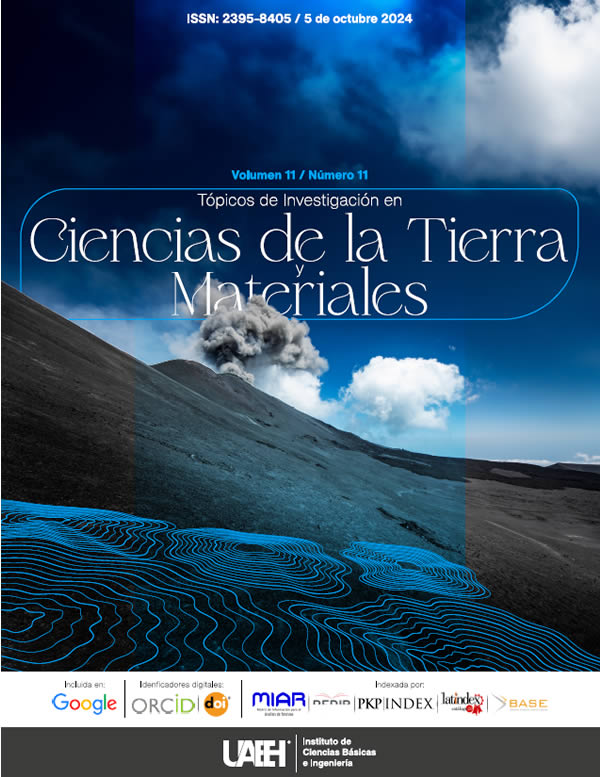Applications of Griffith's equation in the study of cracks developed in mechanical elements subject to axial stresses, working under accelerated aging conditions
Abstract
Mechanical components often suffer fractures due to porosities that form and become cracks due to stress and exposure to the environment, especially when working in aggressive environments. Because of this, it is necessary to study and simulate the aspects that cause these fractures in the first place and thus understand how they develop and spread. Fracture mechanics is usually applied when the component is already on the verge of failure, using finite element analysis to evaluate the fracture behavior, however, it is also essential to analyze the previous stages to forecast the remaining service life and evaluate corrosion factors from the environment. The external variables include UV radiation, temperature, and humidity, while the internal variables are mechanical properties of the material. The expected degradation is represented as a function of time and these variables. The maximum acceptable stress and maximum allowable crack length are calculated to determine whether the component is safe. Some case studies in AISI 4140 ferrous materials are presented, where the degradation was measured at the periphery of a specimen and the degradation trend was calculated, as well as the study of finite element analysis, in order to identify the maximum main processes surrounding the crack boundaries
Downloads
References
Timoshenko, S. P. y Goodier, J. N., Theory of Elasticity, Ed. Mc Graw Hill International, 1970. ANSYS, Version R19.0, Estándar user manual, 2020.
Dowling, N. E., Mechanical Behavior of Materials, Ed. Prentice-Hall International Editions, pp 500-650, 1993.
Smith, J. A. Mecánica de Materiales Avanzada., Ed. Universitaria, pp 78-80., 2020.
Press, W. H., Flannery, B. P., Teukolsky, S. A. y Vetterling, W. T., Numerical Recipes, Ed. Cambridge University Press, 1987. DOI: https://doi.org/10.2307/3616529
Arad, S., Fracture Mechanics Analysis of Fatigue Crack Growth in Viscoelastic Solids, Tesis de Doctorado, University of London. November 1972. DOI: https://doi.org/10.1016/j.tafmec.2021.102943
Margolin, L. G., A generalized Griffith criterion for crack propagation, Engenier Fracture Mechanics, Vol. 19, No. 3, pp 539-543, 1984. DOI: 10.1016/0013-7944(84)90010-9
Walter S., A History of Fatigue, Engineering Fracture Mechanics, Vol. 54, N.o 2, pp 270-300. 1996. DOI: 883ee8db2c2f274e
Urriolagoitia S. G., Durodola, J. F. y Fellows, N. A., Effect of strain hardening on residual stress distribution in beams determined using the crack compliance method, Journal of Strain Analysis for Engineering Design, Vol. 42, No. 2, pp 151-121, 2007. DOI: https://doi.org/10.1243/03093247JSA165
Berkovits, A., Aeronautical fatigue in the electronic era, Proceedings of the 15th ICAFSymposium, pp 1-12, 1989.
Boyer, H. E., Atlas of Fatigue Curves, Ed. American Society for Metals, 1986.
Krishnan, K., Perez, R. y Kumar, V., Effects of pitting corrosion on the fatigue behavior of aluminum alloy 7075-T6 modeling and experimental studies, Journal of Materials Science and Engineering A-Structural Materials Properties Microstructure and Processing, Vol. 297, pp 223-229, 200.1DOI: 10.1016/SO921-5093(00)01216-8
Copyright (c) 2024 Misael Flores Báez, Israel Flores Baez, Arturo Sanchez Cervantes, Guillermo Urriolagoitia Sosa, Israel Fernando Barajas Ambriz, Gabriela Ramirez Sanchez

This work is licensed under a Creative Commons Attribution-NonCommercial-NoDerivatives 4.0 International License.











